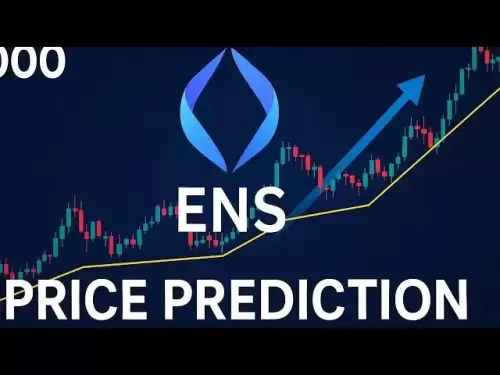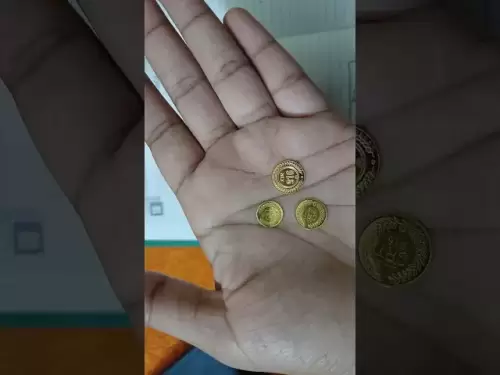-
 Bitcoin
Bitcoin $107,247.2038
-0.18% -
 Ethereum
Ethereum $2,424.7947
0.34% -
 Tether USDt
Tether USDt $1.0003
-0.02% -
 XRP
XRP $2.1171
-3.33% -
 BNB
BNB $645.6618
0.06% -
 Solana
Solana $141.5898
-1.32% -
 USDC
USDC $0.9998
0.00% -
 TRON
TRON $0.2710
-0.41% -
 Dogecoin
Dogecoin $0.1602
-2.99% -
 Cardano
Cardano $0.5553
-2.28% -
 Hyperliquid
Hyperliquid $36.3019
-2.42% -
 Bitcoin Cash
Bitcoin Cash $491.7212
2.04% -
 Chainlink
Chainlink $13.0810
-0.23% -
 Sui
Sui $2.6080
-5.06% -
 UNUS SED LEO
UNUS SED LEO $9.0040
-0.05% -
 Stellar
Stellar $0.2350
-3.06% -
 Avalanche
Avalanche $17.2294
-2.31% -
 Toncoin
Toncoin $2.8075
-1.05% -
 Shiba Inu
Shiba Inu $0.0...01121
-3.43% -
 Litecoin
Litecoin $84.2215
-0.32% -
 Hedera
Hedera $0.1429
-4.88% -
 Monero
Monero $312.2199
-0.90% -
 Dai
Dai $0.9997
-0.01% -
 Ethena USDe
Ethena USDe $0.9999
-0.02% -
 Polkadot
Polkadot $3.2973
-2.60% -
 Bitget Token
Bitget Token $4.4742
3.12% -
 Pi
Pi $0.5631
-10.10% -
 Uniswap
Uniswap $6.7817
-2.06% -
 Pepe
Pepe $0.0...09252
-3.74% -
 Aave
Aave $251.3830
-2.24%
What to invest in when the RMB depreciates?
When the RMB depreciates, investors should consider assets like the US dollar, gold, real estate, and diversify their portfolios for risk mitigation and optimal returns.
Jan 11, 2025 at 08:29 am

Key Points
- Understand the impact of RMB depreciation on investments.
- Consider investing in assets that are expected to appreciate in value during periods of RMB depreciation.
- Diversify your portfolio across different asset classes to mitigate risks.
- Seek professional financial advice to make informed investment decisions.
Article Content
Understanding the Impact of RMB Depreciation on Investments
When the value of the RMB depreciates against other currencies, it becomes more expensive for Chinese investors to purchase foreign goods and services. This can lead to a decrease in demand for foreign goods and services, which can in turn impact the profits of companies that export to China. As a result, stock prices of Chinese export companies may decline during periods of RMB depreciation.
On the other hand, RMB depreciation can make it cheaper for foreign investors to purchase Chinese goods and services. This can lead to an increase in demand for Chinese goods and services, which can in turn benefit companies that operate in China. As a result, stock prices of Chinese companies that cater to foreign demand may rise during periods of RMB depreciation.
Investing in Assets That Appreciate in Value During RMB Depreciation
There are a number of assets that are expected to appreciate in value during periods of RMB depreciation. These assets include:
- US dollar: The US dollar is a safe-haven currency that tends to appreciate in value during periods of global economic uncertainty. As a result, it can be a good investment for Chinese investors who are concerned about the potential impact of RMB depreciation.
- Gold: Gold is a precious metal that has historically been used as a store of value. It tends to appreciate in value during periods of inflation and economic uncertainty. As a result, it can be a good investment for Chinese investors who are looking to protect their wealth from the effects of RMB depreciation.
- Real estate: Real estate is another asset that is expected to appreciate in value during periods of RMB depreciation. This is because the value of real estate is typically denominated in local currency. As a result, it can benefit from the increase in the value of the local currency during periods of RMB depreciation.
Diversifying Your Portfolio
It is important to diversify your portfolio across different asset classes to mitigate risks. This means investing in a mix of assets that have different risk and return profiles. For example, you could invest in a combination of stocks, bonds, and real estate. By diversifying your portfolio, you can reduce the overall risk of your investments and improve your chances of achieving your financial goals.
Seeking Professional Financial Advice
If you are unsure about how to invest in RMB depreciation, it is important to seek professional financial advice. A financial advisor can help you to assess your investment goals and risk tolerance, and recommend a portfolio of investments that is tailored to your specific needs.
FAQs
What is RMB depreciation?
RMB depreciation refers to a decrease in the value of the Chinese yuan (RMB) against other currencies, such as the US dollar.
What causes RMB depreciation?
RMB depreciation can be caused by a number of factors, including:
- Changes in the value of the US dollar
- Changes in the Chinese economy
- Changes in global economic conditions
What are the risks of RMB depreciation?
RMB depreciation can pose a number of risks for Chinese investors, including:
- Decreased purchasing power of RMB
- Increased cost of foreign goods and services
- Reduced profits for Chinese export companies
How can I protect myself from the risks of RMB depreciation?
There are a number of ways to protect yourself from the risks of RMB depreciation, including:
- Investing in assets that are expected to appreciate in value during periods of RMB depreciation
- Diversifying your portfolio across different asset classes
- Seeking professional financial advice
Disclaimer:info@kdj.com
The information provided is not trading advice. kdj.com does not assume any responsibility for any investments made based on the information provided in this article. Cryptocurrencies are highly volatile and it is highly recommended that you invest with caution after thorough research!
If you believe that the content used on this website infringes your copyright, please contact us immediately (info@kdj.com) and we will delete it promptly.
- QFSCOIN: Your No-Sweat Ticket to Crypto Mining Riches (Bitcoin, Dogecoin, Litecoin)
- 2025-06-27 00:50:12
- Altcoins on the Radar: BlockDAG's Presale Surge, SHIB's Support Test, and the Meme Coin Shift
- 2025-06-27 01:10:11
- Moonveil's $MORE Token: Powering the Future of Web3 Gaming with CEX Listings
- 2025-06-27 00:30:12
- Wormhole Crypto: Navigating Interoperability, Crash Risks, and 10x Potential
- 2025-06-27 00:30:12
- Crypto, SOL Dev, Token Presale: Solana's Rise and the Neo Pepe Phenomenon
- 2025-06-27 01:27:14
- Dogecoin ETF Approval: Is the Meme Dream About to Become Reality?
- 2025-06-27 01:52:13
Related knowledge

What are the skills of Bitcoin option hedging? Practical case sharing
Jun 24,2025 at 04:01pm
Understanding Bitcoin Option HedgingBitcoin option hedging is a risk management strategy used by traders and investors to protect their positions in the volatile cryptocurrency market. By using options, individuals can limit potential losses while retaining the opportunity for profit. In essence, it allows one to insulate against adverse price movements...

How to use the price difference between Bitcoin spot and futures? Arbitrage strategy
Jun 20,2025 at 02:56pm
Understanding Bitcoin Spot and Futures MarketsTo effectively leverage arbitrage opportunities between Bitcoin spot and futures markets, it's essential to understand the fundamental differences between these two types of markets. The spot market refers to the direct buying and selling of Bitcoin for immediate delivery at the current market price. In cont...
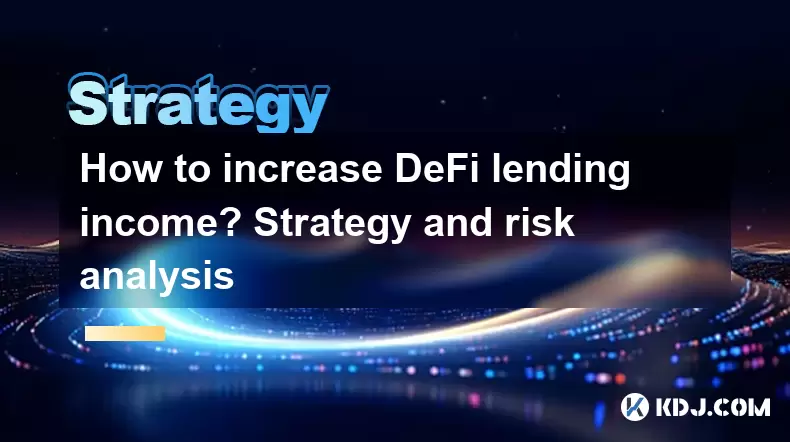
How to increase DeFi lending income? Strategy and risk analysis
Jun 24,2025 at 02:08pm
Understanding DeFi Lending and Its Income PotentialDeFi (Decentralized Finance) lending has emerged as a popular way to earn passive income in the cryptocurrency space. Unlike traditional banking systems, DeFi lending platforms allow users to lend their crypto assets directly to borrowers without intermediaries. The lenders earn interest based on the su...
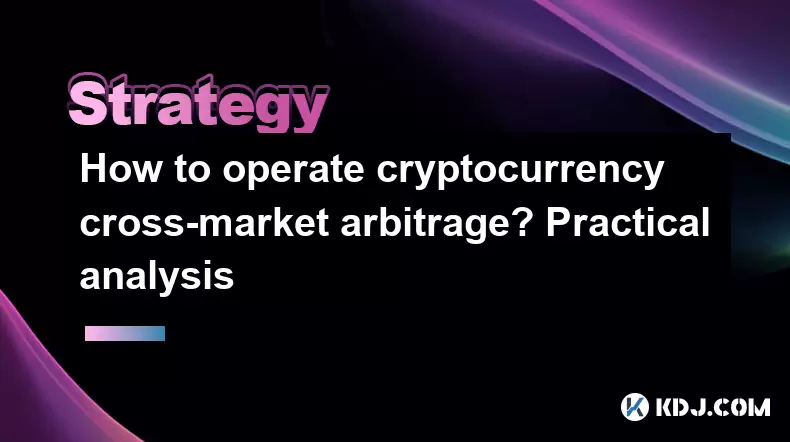
How to operate cryptocurrency cross-market arbitrage? Practical analysis
Jun 23,2025 at 04:01am
Understanding Cryptocurrency Cross-Market ArbitrageCryptocurrency cross-market arbitrage involves taking advantage of price differences for the same digital asset across different exchanges. The core idea is to buy low on one exchange and sell high on another, capturing the profit from the discrepancy. This strategy relies heavily on real-time market da...

How to make profits from high-frequency cryptocurrency trading? Sharing core skills
Jun 19,2025 at 05:07pm
Understanding High-Frequency Cryptocurrency TradingHigh-frequency trading (HFT) in the cryptocurrency market involves executing a large number of trades at extremely fast speeds, often within milliseconds. This method relies on small price discrepancies across exchanges or within a single exchange’s order book. Traders use complex algorithms and ultra-l...
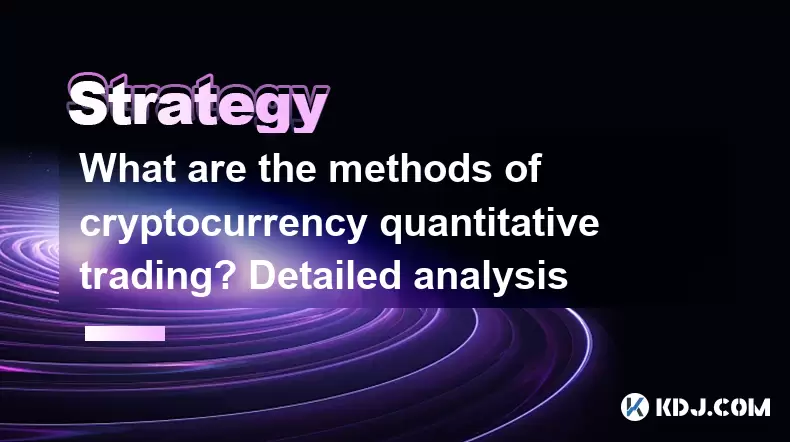
What are the methods of cryptocurrency quantitative trading? Detailed analysis
Jun 22,2025 at 11:07pm
Understanding the Core of Cryptocurrency Quantitative TradingCryptocurrency quantitative trading refers to the use of mathematical models and algorithms to execute trades in the digital asset market. Unlike traditional discretionary trading, which relies heavily on human judgment, quantitative trading leverages data-driven strategies to identify profita...

What are the skills of Bitcoin option hedging? Practical case sharing
Jun 24,2025 at 04:01pm
Understanding Bitcoin Option HedgingBitcoin option hedging is a risk management strategy used by traders and investors to protect their positions in the volatile cryptocurrency market. By using options, individuals can limit potential losses while retaining the opportunity for profit. In essence, it allows one to insulate against adverse price movements...

How to use the price difference between Bitcoin spot and futures? Arbitrage strategy
Jun 20,2025 at 02:56pm
Understanding Bitcoin Spot and Futures MarketsTo effectively leverage arbitrage opportunities between Bitcoin spot and futures markets, it's essential to understand the fundamental differences between these two types of markets. The spot market refers to the direct buying and selling of Bitcoin for immediate delivery at the current market price. In cont...

How to increase DeFi lending income? Strategy and risk analysis
Jun 24,2025 at 02:08pm
Understanding DeFi Lending and Its Income PotentialDeFi (Decentralized Finance) lending has emerged as a popular way to earn passive income in the cryptocurrency space. Unlike traditional banking systems, DeFi lending platforms allow users to lend their crypto assets directly to borrowers without intermediaries. The lenders earn interest based on the su...

How to operate cryptocurrency cross-market arbitrage? Practical analysis
Jun 23,2025 at 04:01am
Understanding Cryptocurrency Cross-Market ArbitrageCryptocurrency cross-market arbitrage involves taking advantage of price differences for the same digital asset across different exchanges. The core idea is to buy low on one exchange and sell high on another, capturing the profit from the discrepancy. This strategy relies heavily on real-time market da...

How to make profits from high-frequency cryptocurrency trading? Sharing core skills
Jun 19,2025 at 05:07pm
Understanding High-Frequency Cryptocurrency TradingHigh-frequency trading (HFT) in the cryptocurrency market involves executing a large number of trades at extremely fast speeds, often within milliseconds. This method relies on small price discrepancies across exchanges or within a single exchange’s order book. Traders use complex algorithms and ultra-l...

What are the methods of cryptocurrency quantitative trading? Detailed analysis
Jun 22,2025 at 11:07pm
Understanding the Core of Cryptocurrency Quantitative TradingCryptocurrency quantitative trading refers to the use of mathematical models and algorithms to execute trades in the digital asset market. Unlike traditional discretionary trading, which relies heavily on human judgment, quantitative trading leverages data-driven strategies to identify profita...
See all articles






















